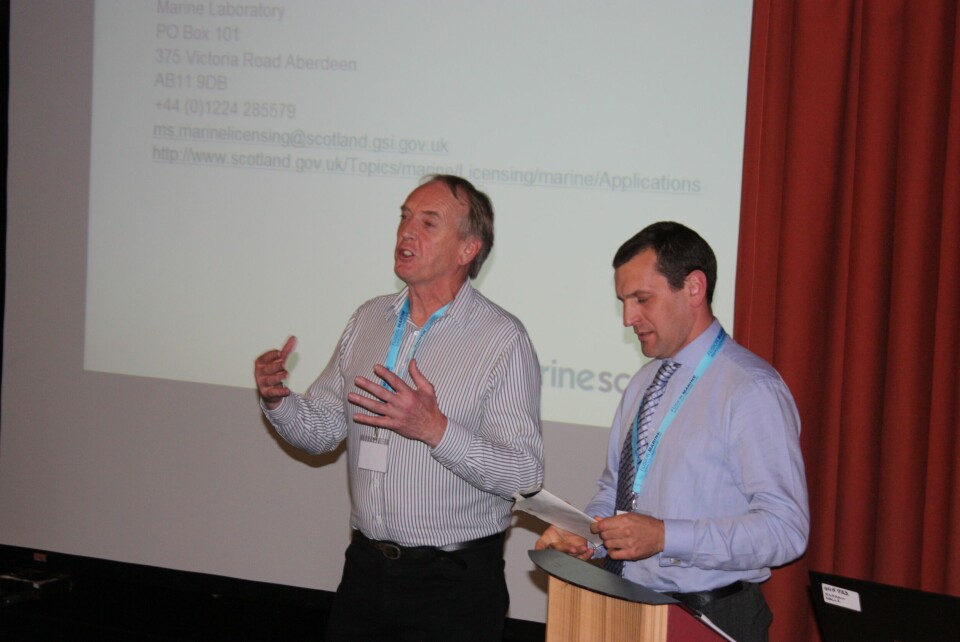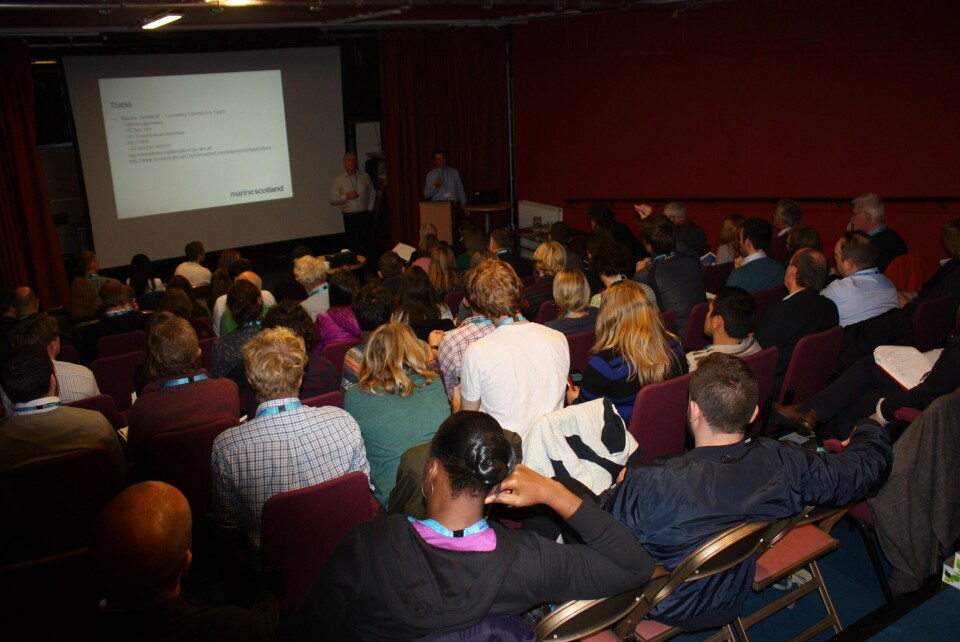
Appetite for cultivation
Scottish seaweed harvesters, processors and potential cultivators are all desperate to have a framework in place to ensure that there is quick and clear path for them to follow as they seek to get their produce from shore to store.
This was abundantly clear at the inaugural meeting of the Scottish Seaweed Industry Association (SSIA), which attracted a capacity crowd to Oban’s Corran Halls yesterday.

Nearly 100 delegates, ranging from academic researchers, to fledgling seaweed cultivators, to established harvesters, to potential equipment providers, to representatives of government bodies and NGOs were treated to a selection of talks that covered most of the key topics that any potential seaweed producer needs to be aware of.
But while there was a clear sense of the potential of the industry in the North Eastern Atlantic, including Scotland, the path towards commercial viability is palpably harder to discern – only a handful of brave pioneers, mainly on the wild harvesting side, have ventured down it.
Although the trail-blazing efforts of wild-harvest-based businesses such as Mara Seaweed (whose CEO Fiona Houston gave the second talk of the day) have shown that it’s possible to establish an economically viable seaweed business, there is not yet a blueprint for success. Equally, the opening talk by Olavur Gregersen of Ocean Rainforest – currently the region’s largest producer, with plans to produce 100,000 tonnes a year – showed that there is some way to go before his growing system can be shown to be commercially viable, although he did point to many encouraging signs.
Regulatory shortfalls
The fact that there is no clear path for producers to take was reinforced, in particular, by the final session at the event – in which speakers from Marine Scotland, Argyll & Bute Council and Food Standards Scotland respectively covered topics relating to licencing, environmental health and labelling of seaweed products. These final talks sparked all manner of questions from the audience, suggesting that the regulations need to evolve and be clarified.
As SSIA chair, Walter Speirs, reflected at the end of the session: “There’s a whole heap of things that we need to feedback [to the regulators]. That’s what the Association is here for.”
Plans for 2017
Alex Adrian of the Crown Estate ended the event by “congratulating Walter and his colleagues for a fantastic inaugural conference and a very thought-provoking day”.
He pointed out that, while a seaweed industry had been talked about in the region for a number of years “it is hugely encouraging to see a business [Ocean Rainforest] has emerged". And he hailed this "a real watershed for the industry.”
He also urged growers to work together to speed up the formation of the various regulatory processes.
“If you start to apply a collective mindset it might happen quite quickly,” he advised. “And I sincerely hope to see you all here next year.”
The event was sponsored by the Crown Estate, Highlands & Islands Enterprise and Friend of the Sea.




















































